ITRC: Managed Aquifer Recharge (MAR) Training
Archived: Tuesday, February 6, 2024
Sponsored by: Interstate Technology and Regulatory Council
The ITRC Managed Aquifer Recharge (MAR-1) Training is intended for state regulators and stakeholders who may not be familiar with the opportunities and challenges associated with MAR. It provides a basic understanding of MAR concepts, along with case studies, that showcase examples of successful MAR applications. For those who are familiar with MAR, the training gives an overview of the components of the MAR process along with the important considerations associated with each component necessary for the design and implementation of a MAR project. It is important to understand that MAR is an area of active research and expanding practical applications, and that this management process is continuing to evolve with time.
The combination of climate change and growing demand for fresh water has resulted in an increase in the vulnerability and scarcity of freshwater supplies around the world. The need for fresh water to grow crops and provide for the welfare of the general population, economic growth, and ecosystems is becoming more acute. In the past 50 years, the amount of water withdrawn for human use has tripled. MAR is becoming an increasingly important method for improving and supplementing subsurface freshwater storage and ecosystems with an additional benefit of reducing flood risk, managing stormwater, mitigating subsidence, and controlling saltwater intrusion.
Training Objectives
- Understand MAR and its applications.
- Recognize MAR as a process rather than a single technology.
- Acknowledge that MAR can be widely applied.
- Understand MAR's role in the future for addressing water supply resilience and climate impacts.
Training Goals
- Provide a model of the MAR process illustrating the primary components and their interaction.
- Provide an overview of the applications of MAR and the role in addressing climate change impacts through sustainability and resilience in water resources management.
- Provide information on each component of MAR and the critical considerations for each component in the design of a MAR project.
- Reference case studies illustrating the various applications of MAR.
After the MAR Training, the audience will have the tools necessary to understand MAR and how it can be used as a water resource management tool that encompasses a wide variety of water sources, recharge methods, and storage management practices. The audience will develop an understanding of MAR and its importance in achieving sustainability, resilience, and the far-reaching benefits of MAR related to water supply and quality, mitigation of saltwater intrusion, flood control, and ecological habitats. This training will provide information about the components of a MAR project to help regulators, practitioners, and stakeholders in the development and review of a MAR project.
Recommended Reading: Participants are strongly encouraged to review the ITRC Managed Aquifer Recharge document prior to participating in the training class.
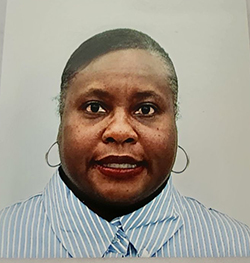 Linda Bowling, U.S. EPA (bowling.linda@epa.gov)
Linda Bowling, U.S. EPA (bowling.linda@epa.gov)
Linda Bowling is an Environmental Engineer who writes permits for the Region 8 Underground Injection Program in Denver, Colorado. For the last 25 years she has worked for the Environmental Protection Agency to protect human health and the environment. She graduated from Mississippi State University in 1996 with a Bachelor of Science degree in Chemical Engineering. She has prepared authorizations for various types of actions which include: to dispose of non-hazardous industrial waste; to both perform enhanced oil recovery operations and/or to dispose of water produced from oil and gas operations; to recharge an aquifer; and to store a potential drinking water source in an aquifer for a beneficial use. She has led efforts as the Aquifer Storage and Recovery Team Leader that has resulted in the issuance of the Regions first ASR Permits. She has served as a member of a multi-disciplinary and multi-program team who are tasked to prepare a framework document which provides guidance on how to better communicate with Tribal Governments on permitting actions, consultation invitations, environmental justice needs, education of tribal members and other stakeholders, and other matters.
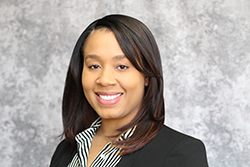 Kelsey Bufford, Oklahoma DEQ (kelsey.bufford@deq.ok.gov)
Kelsey Bufford, Oklahoma DEQ (kelsey.bufford@deq.ok.gov)
Kelsey Bufford is an Environmental Programs Manager for the Oklahoma Department of Environmental Quality. She is the manager for the Land Protection Division Superfund Program, focusing on remedial actions, maintenance, and compliance for uncontrolled hazardous waste sites. Prior to working for DEQ, she worked for Greystone Environmental Services conducting and drafting environmental site assessments for real estate. Before joining the environmental sector, Kelsey worked as a geophysicist for ConocoPhillips in Houston, Texas where she interpreted seismic and well data to generate potential oil and gas prospects. Her education includes a Bachelor’s and Master's degree in Geology from Oklahoma State University with an emphasis on potential field geophysics.
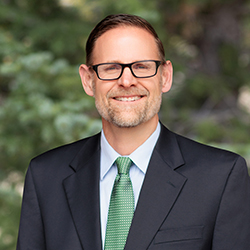 Jeff Davis, Integral Consulting, Inc (jdavis@integral-corp.com)
Jeff Davis, Integral Consulting, Inc (jdavis@integral-corp.com)
Jeff Davis is a licensed civil and environmental engineer and certified groundwater professional with 27 years of global experience working on every continent except Antarctica. Mr. Davis has been involved in remediation projects throughout the country for most of his career and has spent many years working on coal combustion residual landfills and other waste impoundments. He has developed and used numerous groundwater models for the mining and energy industries, including projects involving environmental impact statements, environmental assessments, water management, groundwater–surface water contamination, dewatering, and water supply and treatment. He has extensive knowledge of groundwater flow-and-transport principles and has taught numerous workshops and classes in the U.S. and around the world. His current focus is on water and groundwater sustainability and drought resiliency. Mr. Davis has extensive experience in the design and implementation of aquifer storage and recovery projects across the country.
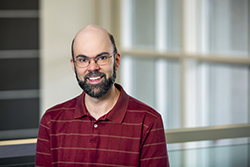 Adam Janzen, Barr Engineering (ajanzen@barr.com)
Adam Janzen, Barr Engineering (ajanzen@barr.com)
Adam Janzen is a senior environmental engineer at Barr Engineering Co. He has 12 years of experience in groundwater hydrology and specializes in the use of computational models to solve complex problems involving groundwater flow and quality. Adam has developed groundwater models for a wide variety of applications, including municipal water supply, surface mine dewatering, contaminated site assessment and remediation, surface water-groundwater interactions, and managed aquifer recharge. Prior to joining Barr in 2011, he developed multi-phase flow models for geologic carbon dioxide sequestration for a start-up company. Adam was previously an instructor for ITRC’s Geospatial Analysis for Optimization at Environmental Sites web-based training. He earned a bachelor’s degree in civil and environmental engineering from the University of Illinois at Urbana-Champaign in 2008 and a master’s degree in civil and environmental engineering from Princeton University in 2010. He is a licensed professional engineer in several U.S. states.
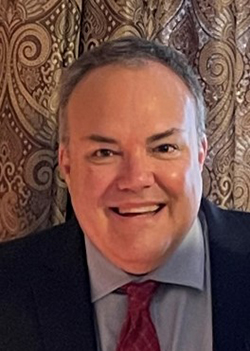 Kristopher McCandless, Virginia DEQ (kristopher.mccandless@deq.virginia.gov)
Kristopher McCandless, Virginia DEQ (kristopher.mccandless@deq.virginia.gov)
Kristopher (Kris) McCandless has worked for the Virginia Department of Environmental Quality (VDEQ) in Woodbridge, Virginia since 2015. He has a BS in Geology from George Mason University (1988) and has been working with coastal plain and bedrock aquifers related to environmental impact throughout 34 years of consulting and the regulatory community. As a Certified Professional Geologist in the petroleum storage tank remediation division, he manages the characterization and remediation of leaking petroleum storage tank sites, as well as assisting the Land Protection Program with chlorinated solvent sites. Kris investigates the local hydrogeology for siting new supply wells, tracks groundwater flow through fractured media, performs packer testing, and pump tests in fractured rock.
In the past eight years with VDEQ, he contributed to writing ITRC's Characterization and Remediation of Fractured Bedrock team in 2015 and up through 2022 introduced the Internet Based Training (IBT) for this team, was an active team member in ITRC's 2020 Optimization of In Situ Remediation team (currently introducing the IBTs for this course), and started off as an active team member for the Managed Aquifer Recharge (MAR) team in January 2022, to become Co-Team Leader later that year when other leaders vacated that position.
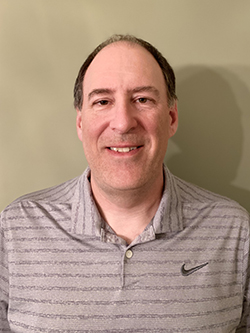 John Mitsdarfer, Oklahoma DEQ (John.Mitsdarfer@deq.ok.gov)
John Mitsdarfer, Oklahoma DEQ (John.Mitsdarfer@deq.ok.gov)
John Mitsdarfer is a project manager for the Voluntary Cleanup Program at the Oklahoma Department of Environmental Quality (DEQ) , overseeing multiple remediation sites across the state. He is also part of DEQ’s Underground Injection Control (UIC) Program, serving as the Class I UIC Inspector and providing peer review for UIC Class V injection well permit applications, including Managed Aquifer Recharge (MAR) and Aquifer Storage and Recovery (ASR) Projects. He is the state agency representative Co-Chair for the Ground Water Protection Council’s ASR-MAR Workgroup. John also serves on the Interstate Technology and Regulatory Council MAR Team as a writing team leader and training subgroup member.
John worked for 20 years as an exploration and development geologist and geophysicist in the oil and gas industry. During that time he worked on projects around the world, initially with Phillips Petroleum, then for smaller independent oil and gas companies. He conducted a variety of projects from field development to exploration in both conventional and unconventional plays in multiple basins. During the COVID pandemic, John switched careers, obtaining an Environmental Geology certification, and working for the DEQ beginning in 2021 in RCRA permitting and corrective action.
John graduated with his Bachelors and Master’s degrees in Geology from the University of Kansas. He and his family reside in the Tulsa, Oklahoma metropolitan area.
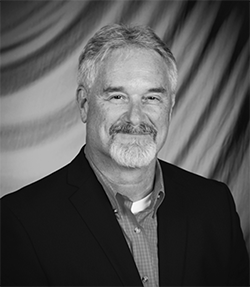 Guy Sewell, ECU Emeritus (sewell@mac.com)
Guy Sewell, ECU Emeritus (sewell@mac.com)
Dr. Guy W. Sewell is an internationally recognized expert in the areas of water resources, contaminant fate and transport, and the treatment of hazardous waste. Dr. Sewell is a Board Certified Environmental Scientist through the American Academy of Environmental Engineers and Scientists (AAEES), with a recognized specialty in groundwater and the subsurface environment. Dr. Sewell has also a served as a designated Technical Subject Matter Expert for Los Alamos National Laboratory and the US-EPA’s ERG Support Contract, and has published over 50 scientific papers on topics such as groundwater quality, subsurface ecology, environmental cleanup and water resources, and made scientific presentations at numerous national and international meetings, and currently serves as a member of the ITRC Managed Aquifer Recharge Team. Dr. Sewell was a member of the East Central University faculty from 2002 until 2023 and held the Robert S. Kerr Endowed Chair and the rank of Professor of Environmental Health Sciences. At ECU he served as the founder and Director of Research and Development for The Oka’ Institute at ECU. Prior to coming to ECU, Dr. Sewell was a research microbiologist with the U.S. EPA at the Robert S. Kerr Environmental Research Center where he served as Research Team Leader for the Biotransformation, Subsurface Ecology, Ecosystems Restoration and Lake Texoma Research Groups.
Dr. Sewell received a B.S. in Microbiology with a Minor in Chemistry in 1980, and a Ph.D., in Microbiology in 1987 from Oklahoma State University. He then accepted a Gas Research Institute Post-Doctoral Fellowship in Molecular Biology at the University of Florida. Dr. Sewell has also completed Environmental Economics Program in 2000 at the John F. Kennedy School of Government, Harvard University and in 2001 returned from a Sabbatical as a Visiting Researcher in Bioinformatics at the University of Oklahoma.
Moderator:
Nicole Henderson, ITRC Contractor (nicole.henderson@hmenviro.com)
Webinar Slides and References:
Additional Resources:
Help & FAQs
- Frequently Asked Questions
- Content Questions?
Call ITRC Training Program at 202-266-4932 or itrc@itrcweb.org - Technical Problems?
Leave us a comment - Cancel Your Registration
- My Participation Records
- CEU Credits and PDHs
Zoom Resources
This seminar will be delivered through Zoom. Participants are encouraged to update to the latest version of the Zoom application for the best experience. If you are unable to install the Zoom application, most functions will be available if you join just using a modern web browser such as Chrome, Edge or Firefox. We strongly encourage you to run the Zoom Meeting Test prior to attending this seminar. Technical support on the day of the seminar will be very limited and subject to significant delays.
Rehabilitation Act Notice for Reasonable Accommodation
It is EPA's policy to make reasonable accommodation to persons with disabilities wishing to participate in the agency's programs and activities, pursuant to the Rehabilitation Act of 1973, 29 U.S.C. 791. Any request for accommodation should be made to ITRC Training Program at 202-266-4932 or itrc@itrcweb.org, preferably one week or more in advance of the seminar, so that EPA will have sufficient time to process the request. EPA would welcome specific recommendations from requestors specifying the nature or type of accommodation needed. EPA welcomes specific recommendations from requestors specifying the nature or type of accommodation needed. Please note that CLU-IN provides both alternate phone call-in options and closed captioning for all webinars, and requests for these specific accommodations are not necessary.
Rehabilitation Act Notice for Reasonable Accommodation
It is EPA's policy to make reasonable accommodation to persons with disabilities wishing to participate in the agency's programs and activities, pursuant to the Rehabilitation Act of 1973, 29 U.S.C. 791. Any request for accommodation should be made to ITRC Training Program at 202-266-4932 or itrc@itrcweb.org, preferably one week or more in advance of the webinar, so that EPA will have sufficient time to process the request. EPA would welcome specific recommendations from requestors specifying the nature or type of accommodation needed. EPA welcomes specific recommendations from requestors specifying the nature or type of accommodation needed. Please note that CLU-IN provides both alternate phone call-in options and closed captioning for all webinars, and requests for these specific accommodations are not necessary.
Webinar Recording
By participating in this CLU-IN webinar, you automatically agree to authorize recording of audio and visual content presented during this live event and consent to subsequent use of this recording in the public domain by the U.S. Environmental Protection Agency. This recording may include questions, comments and poll responses provided by you during the live event in addition to your name, voice, image or likeness. This recording will be made available after the conclusion of the live event as part of the CLU-IN webinar archives, and will remain available indefinitely. If you do not wish to consent to the recording, please do not join the live event, and contact Jean Balent at 202-566-0832 or balent.jean@epa.gov to discuss your concerns.
Content Disclaimer
This webinar is intended solely to provide information to the public. The views and opinions expressed as part of this webinar do not necessarily state or reflect those of the U.S. Environmental Protection Agency. It is not intended, nor can it be relied upon, to create any rights enforceable by any party in litigation with the United States, or to endorse the use of products or services provided by specific vendors. With respect to this webinar, neither the United States Government nor any of their employees, makes any warranty, express or implied, including the warranties of merchantability and fitness for a particular purpose, or assumes any legal liability or responsibility for the accuracy, completeness, or usefulness of any information, apparatus, product, or process disclosed, or represents that its use would not infringe privately owned rights.

